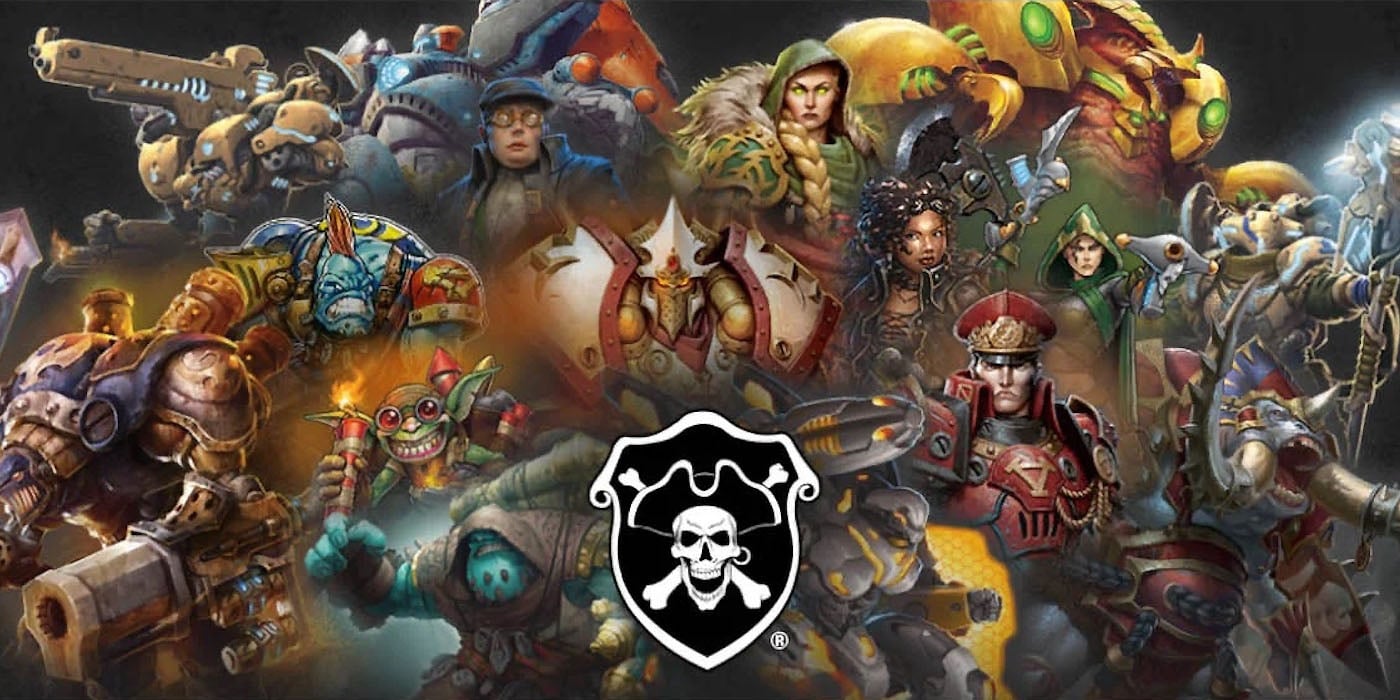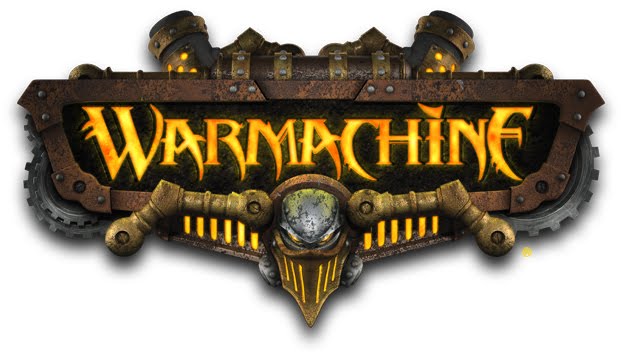Whether Warmachine?

Go back six years, and 40k and WFB were the whole of my hobby world. At that point I’d been playing the games for a full decade. I had five 40k armies and four for fantasy. I could name the Primarch of every Space Marine chapter and recite the history of the High Elves from the time of their first meetings with the Old Ones. The few other miniatures games around seemed to come and go. A few of them looked interesting, but come on… did anyone really play them?
Getting me to waste my money on something a few weirdos played in their basements was going to be a hard sell. So the fact that Privateer Press’s Warmachine was the first other miniatures game I witnessed actual human beings playing did a lot to catch my attention. Eventually two of my oldest gaming buddies picked it up and went about convincing me that it was worth trying. These were folks I’d known for five years. Both were consummate 40k players whose comments and criticisms of the game I’d always found to be more or less dead on. If this game was worth their time, I was going to give it a try. Here’s why I’ve been playing it ever since:
The Setting
Warmachine and its sister game Hordes, are set in a classic fantasy world that has undergone a technological revolution. It was originally designed as a D20 setting, and has all the depth and content you would expect from a fully realized fantasy world. Six centuries before the current timeline, the Dwarf realms taught the secrets of warjack construction to the enslaved kingdoms of man. The first warjacks, titanic beasts of steel called Colossals, drove their oppressors back to their longboats and into the sea. In the years since, resource limitations have reduced the size of warjacks to the more modest 10 ton constructs you’ll find in the game. The nations of the aptly named Iron Kingdoms now use these machines to wage war on each other and on the less technologically inclined races of Hordes. The latter wage their wars using great beasts whose rage they tap to fuel their powerful magic. Between Warmachine and Hordes (yes the two games are meant to be played together), the game now has 10 different factions. For the sake of space, this will be the last I mention of Hordes, as it has slightly different rules.
The Basics
At the core of Warmachine are the concepts of focus, warcasters and warjacks. Each warcaster is a unique character with a unique history and background. The death of your warcaster will cost you the game. They are the generals of your army and each comes with a list of different spells, skills, equipment, and a feat: a powerful once per game ability that can turn the tide of battle. These abilities comprise the core tools you will use to achieve victory. A warcaster’s list of spells is potentially his most important asset. Depending on the warcaster, these spells might help protect your troops, cripple your opponent’s army, or just destroy your enemies directly. Casting these spells will cost your warcaster focus, a limited resource representing his magical ability.
Focus will also help your warjacks. These machines possess magical brains called cortexes, which allow them to think almost intelligently. But the steam powered behemoths are only capable of so much on their own. Their performance will be greatly enhanced if your Warcaster diverts some of his attention from spell casting to help them fight more effectively with the allocation of some of his focus. A warjack can spend his focus to run, charge, make another attack, or boost an attack or damage roll. How you choose to use your focus is the difference between victory and defeat.
Game Mechanics
Attack rolls in Warmachine are made by rolling 2d6, and adding the result to your relevant attack value. If the total exceeds your targets defense you score a hit. Damage rolls are made the same way, and the amount by which your total exceeds your target’s armor is the amount of damage your attack will cause. This gives the game a wider probability curve, and brings us back to another key concept: boosting. One of the primary uses of focus is to allow you to boost, letting you roll an additional die for attack and damage rolls. This will help you hit targets with higher defense, or do more damage to the heavily armored ones. Many models have stats designed to make sure you will have to boost to hit or damage them, making it even more important to spend your focus wisely. And since a heavy warjack has around 30 damage boxes, you’ll need all the focus you can get.
And since warcasters only have so much focus, every army has numerous infantry choices. Infantry act more autonomously, and the only focus they will require will be from the beneficial spells you may choose to cast on them. The roles your infantry will play in your army vary. They could serve as simple a purpose as shooting the enemy or hacking them to bits, but it’s just as likely they will play a more esoteric role. For example, Mechaniks help repair your warjacks, while the Choir of Menoth chants holy prayers to make them fight more effectively. Your infantry will be further aided by “solos”, heroes or specialists who fight individually, helping to inspire your troops or face the enemy head on themselves.
While infantry typically only have one damage box each, a solo can have up to ten. I think the infantry in this game gives it a lot of its real flavor. The Knights Exemplar with their Baroque armor and blessed relic blades are one of the biggest reasons I chose the Protectorate of Menoth as my first faction. But it wasn’t easy… Cygnar had the Storm Guard, whose glaives generate lightning and electrocute the enemy as they engage them. Cryx had Mechanithralls: foul zombies augmented with giant mechanikal piston fists. Finally Khador had the elite Man-O-War, fearless men in oversized steam powered armor who stand head to head against the warjacks they fight.
Warmachine was designed to encourage players to engage each other head on. Designated shooting units can be expected to have a range around 10-14”. The longest range in the game is 20”. In Warmachine, the only units that are penalized for moving are the few heavy weapon teams. At the same time, units that do not move receive an aiming bonus because your pieces are expected to be moving all the time. The low ranges also mean losing the first turn roll probably won’t be too devastating. In fact depending on your strategy, you may find yourself seizing the opportunity to go second.
Where to Begin
Starting Warmachine is easy. It’s a skirmish game, and a basic army could run anywhere from 5 to 50 models, though a typical game will probably have 20 to 30. The smaller army sizes can make its initial cost lower than other miniatures games. Most players begin with one of the Battle Boxes, which contains a warcaster and several warjacks. Each Battle Box is designed to be balanced for play against another, so you get a starting army to learn with for the first few games. Once you’ve got it down you add some infantry and a few solos and very quickly have a full points level army. Every warcaster is unique, so once you’ve got your first army together, you can buy a new warcaster for a new and different gaming experience. Where you go from there is up to you.
Warmachine Mk.2
I think the most interesting thing to happen to Warmachine has been the MkII Field Test that kicked off this April. After eight years and six expansions the game’s creators decide it was in need of an overhaul. In an almost unheard of gesture they gave the players access to the rough prototype of the MkII rules through their website. For a month thousands of people the world over ran these new rules through the ringer trying to find the most broken combos and the most useless pieces, allowing players the opportunity to help shape the future of the game. When the field test ended in May, Warmachine fans collectively took a deep breath and began the long wait for the release of the finalized new rules this coming January. When Privateer Press posted an official draft of the MkII rules on their website this Monday, everyone was taken completely by surprise. The overall response has been tremendously positive. Go check them out yourselves. they are absolutely free.
~So if you need one more reason to try Warmachine there you go. The rules are available to download for free from their website right now. But if you do decide to give it a try, leave everything you know about 40k or Fantasy at the door. I promise you this game will be a completely new experience. Gentleben here, and its good to back at BoLS. I’d love to hear your thoughts on what has become one of my favorite games. And, yes, you can expect many more pretty pictures in the future from my collection.






